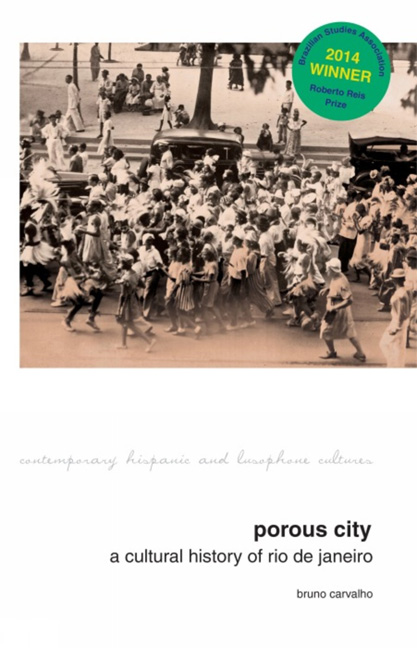Book contents
- Frontmatter
- Contents
- List of Maps
- List of Figures
- A Note on Translation
- Preface
- Introduction: In Search of Things Past: Mapping Rio
- 1 At the Centre of an Imperial Capital: Swamps, Yellow Fever, and Gypsy Parties
- 2 A Master on the Periphery of a Periphery: Popular Music, Streetcars, and the Republic
- 3 Beyond the Belle Époque: On the Border of a ‘Divided City’
- 4 Afro-Jewish Quarter and Modernist Landmark
- 5 Writing the ‘Cradle of Samba’: Race, Radio, and the Price of Progress
- 6 ‘It's (Mostly) All True’: The Death of a Neighbourhood and the Life of Myths
- Conclusion: The Future Revisited: Where Has the Past Gone and Where Will it Go?
- Acknowledgements
- Works Cited
- Index
Introduction: In Search of Things Past: Mapping Rio
- Frontmatter
- Contents
- List of Maps
- List of Figures
- A Note on Translation
- Preface
- Introduction: In Search of Things Past: Mapping Rio
- 1 At the Centre of an Imperial Capital: Swamps, Yellow Fever, and Gypsy Parties
- 2 A Master on the Periphery of a Periphery: Popular Music, Streetcars, and the Republic
- 3 Beyond the Belle Époque: On the Border of a ‘Divided City’
- 4 Afro-Jewish Quarter and Modernist Landmark
- 5 Writing the ‘Cradle of Samba’: Race, Radio, and the Price of Progress
- 6 ‘It's (Mostly) All True’: The Death of a Neighbourhood and the Life of Myths
- Conclusion: The Future Revisited: Where Has the Past Gone and Where Will it Go?
- Acknowledgements
- Works Cited
- Index
Summary
Few images are as apt as a palimpsest to convey the complex layers that make up our contemporary cities. Combining the Greek pálin (‘again’) and psáo (‘I scrape’), palimpsests designate a manuscript in which the text of the first writing is scraped off so that the parchment or clay tablet may be written on again. They have served as a fertile metaphor to the fields of architecture, archaeology, planetary astronomy, forensic science, psychoanalysis, geology, and literary criticism, and likewise populate the imaginary of urban historians and theorists.1 Urban spaces are like a palimpsest in a palpable, physical sense: as a city undergoes reforms or development, its tangible, visible signs – buildings, streets, parks, trees – are ‘scraped off’, demolished, or razed to allow for the new. But the past, in cities as in a reused manuscript, can make itself present even when it appears to have been discarded. In that way, palimpsests provide a suggestive metaphor to enrich our reflections of any twenty-first-century metropolis, especially those that have been torn apart and rebuilt over wars, natural disasters, and large-scale reforms.
Rio de Janeiro, founded in 1565, never experienced major destruction caused by bombings, earthquakes, hurricanes, or fires. Brazil's capital from 1763 until 1960, the city might seem young by the standards of the Old World, but it is difficult to imagine a place that has been more ‘scraped off’ during the last 200 or so years. Some of Rio's central streets had three or four generations of buildings occupy the same site in the twentieth century alone, and the image of a palimpsest becomes particularly fitting. As the most visible city of a nation eager to establish itself as modern and cosmopolitan, the former capital often acted as a showcase – or laboratory – for numerous architectural, city planning, and urbanism typologies. That alone might not set it apart, but as we will soon see, throughout this process Rio's cityscape gave shape to remarkable urban forms, social relationships, and cultural expressions.
In the context of Rio de Janeiro's urban history, the Cidade Nova was at once full of particularities and representative of the city as a whole.
- Type
- Chapter
- Information
- Porous CityA Cultural History of Rio de Janeiro (from the 1810s Onward), pp. 1 - 15Publisher: Liverpool University PressPrint publication year: 2013



